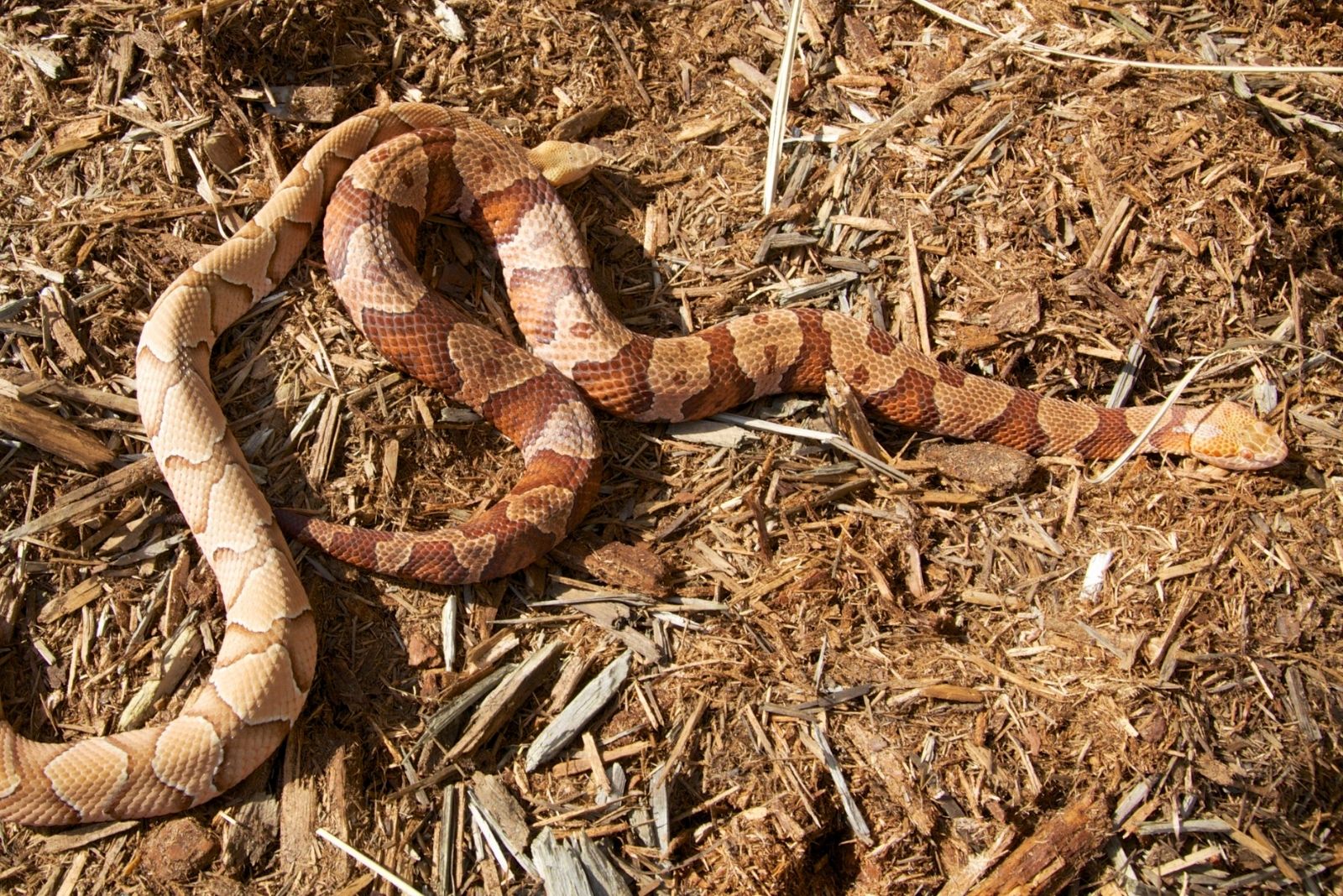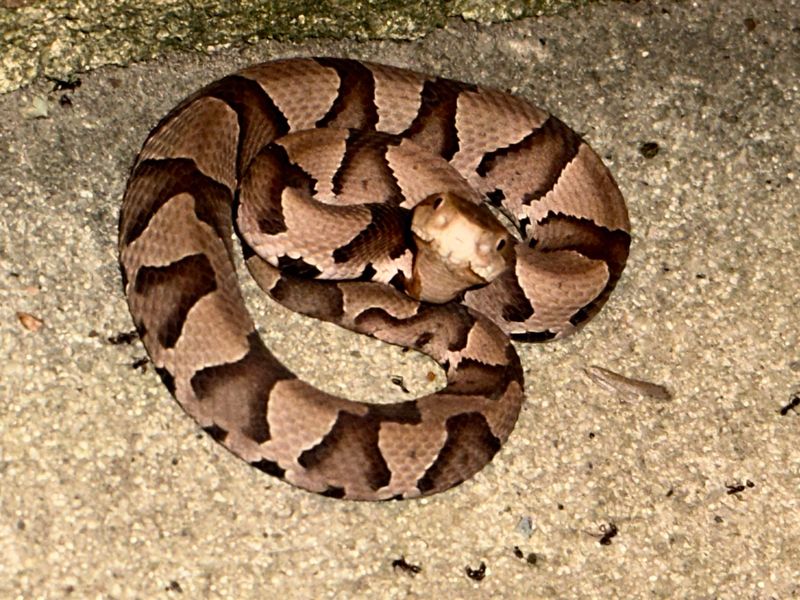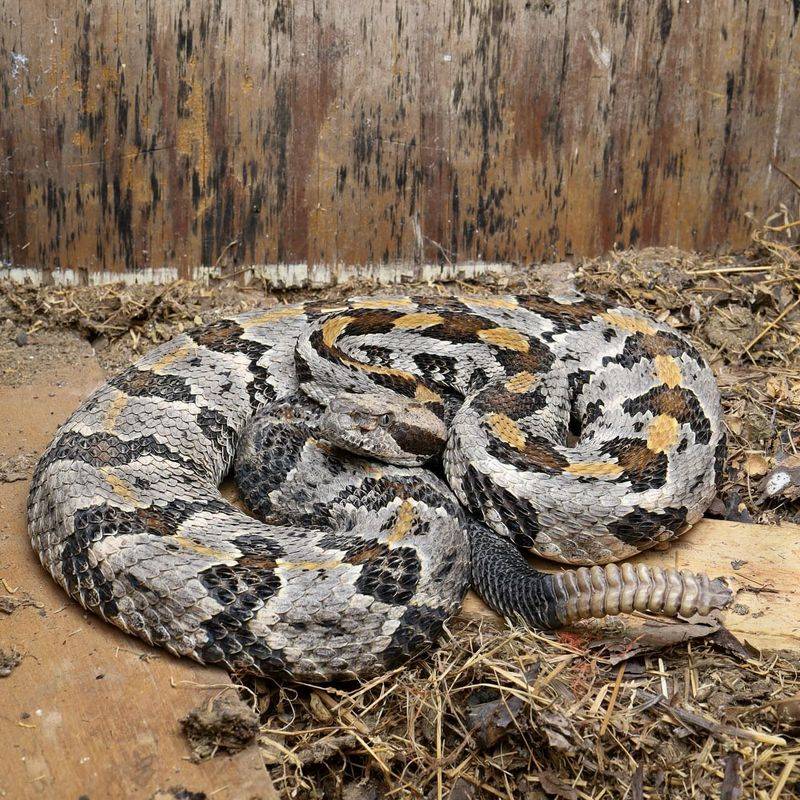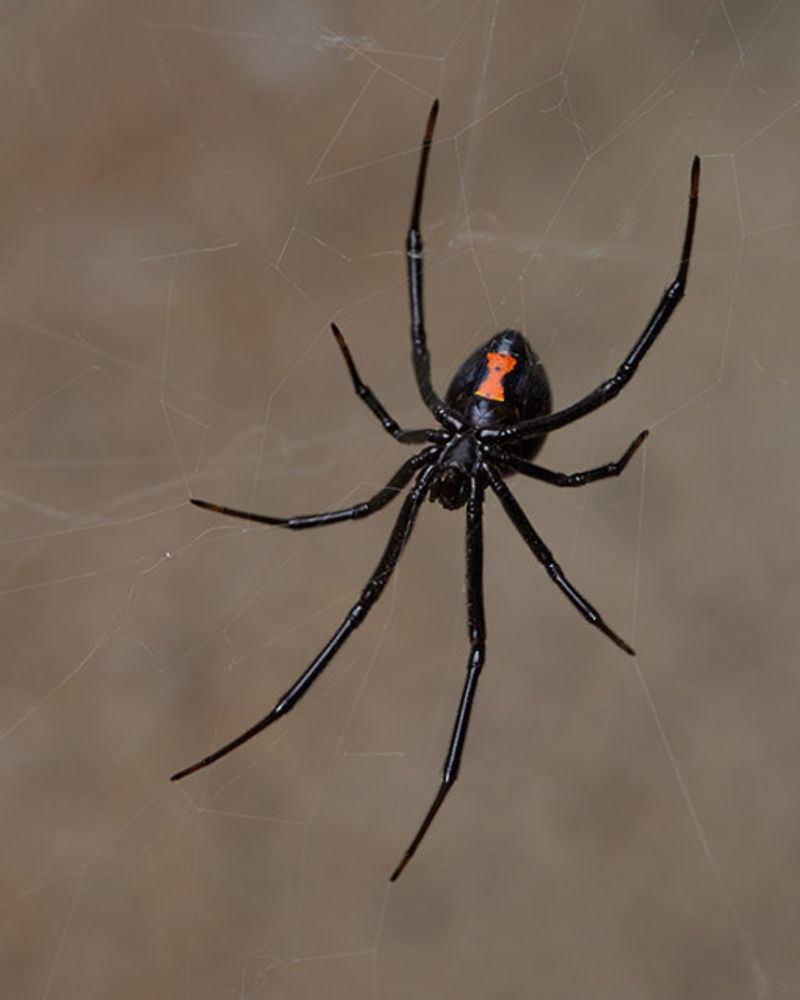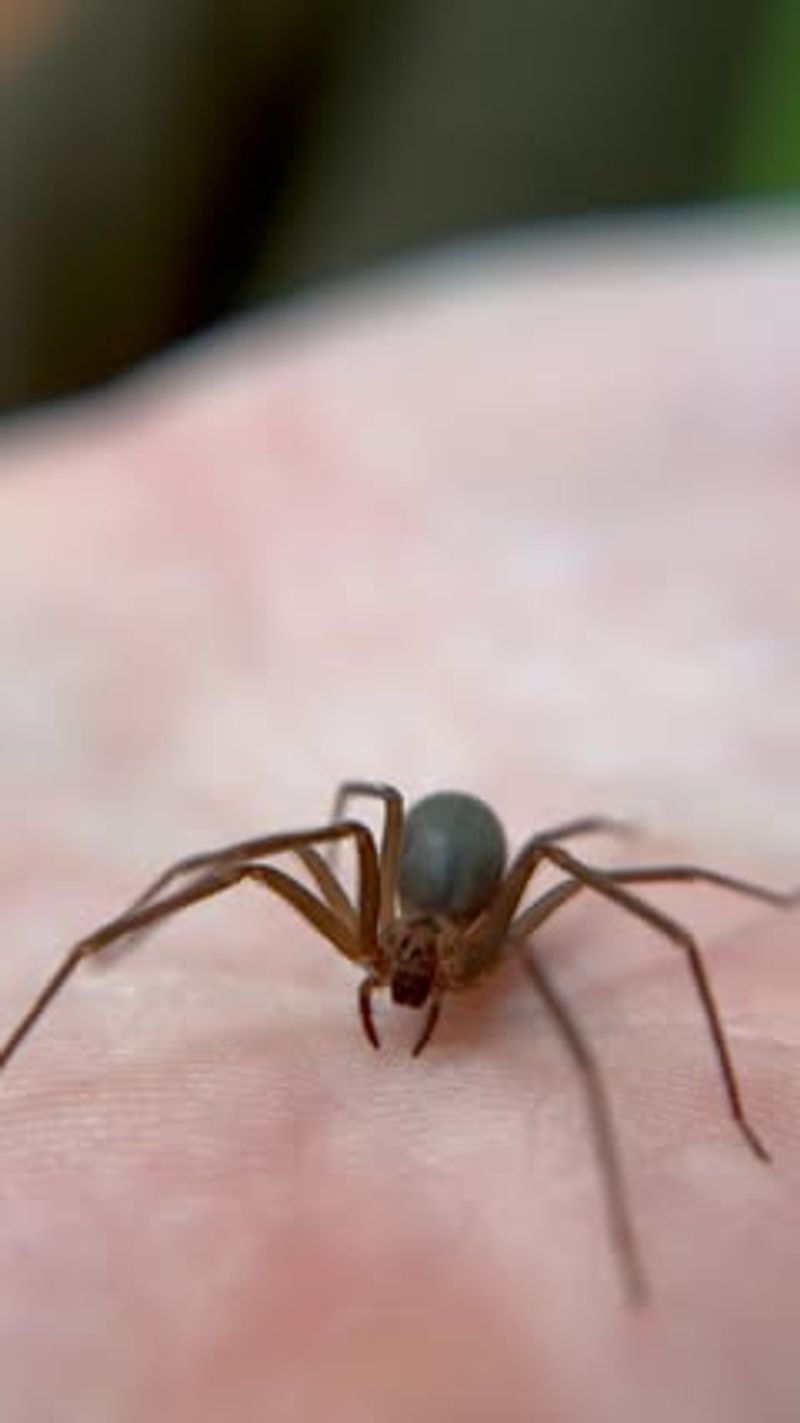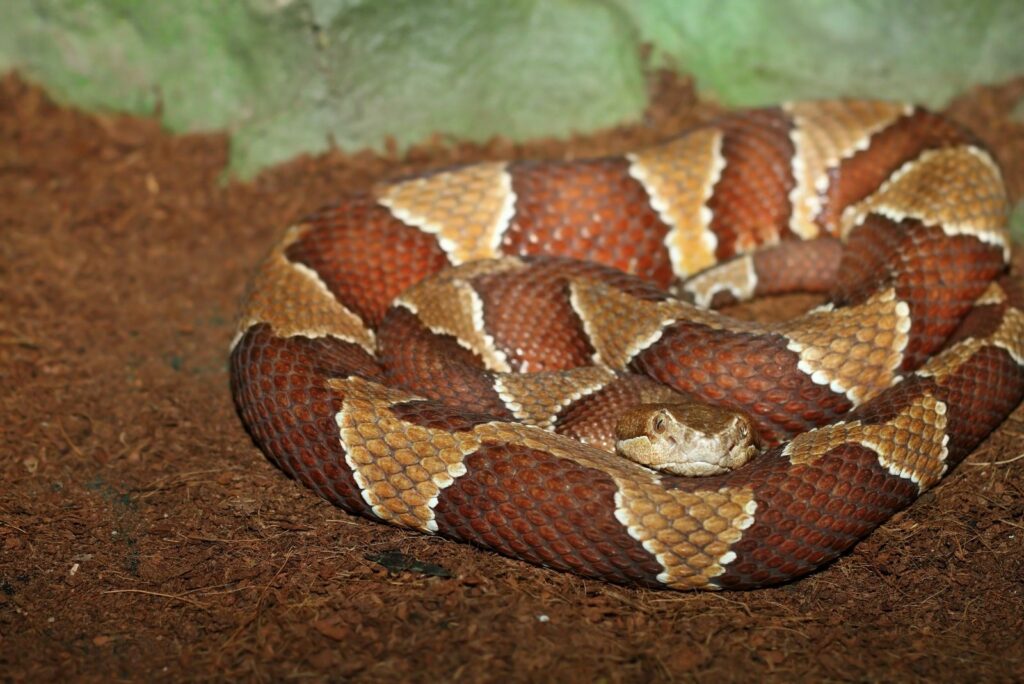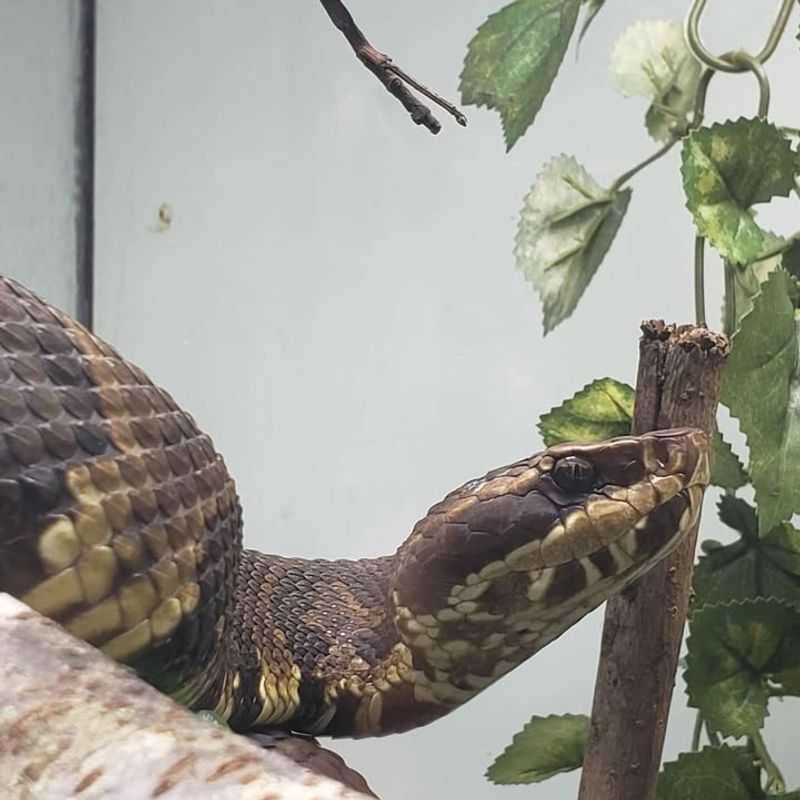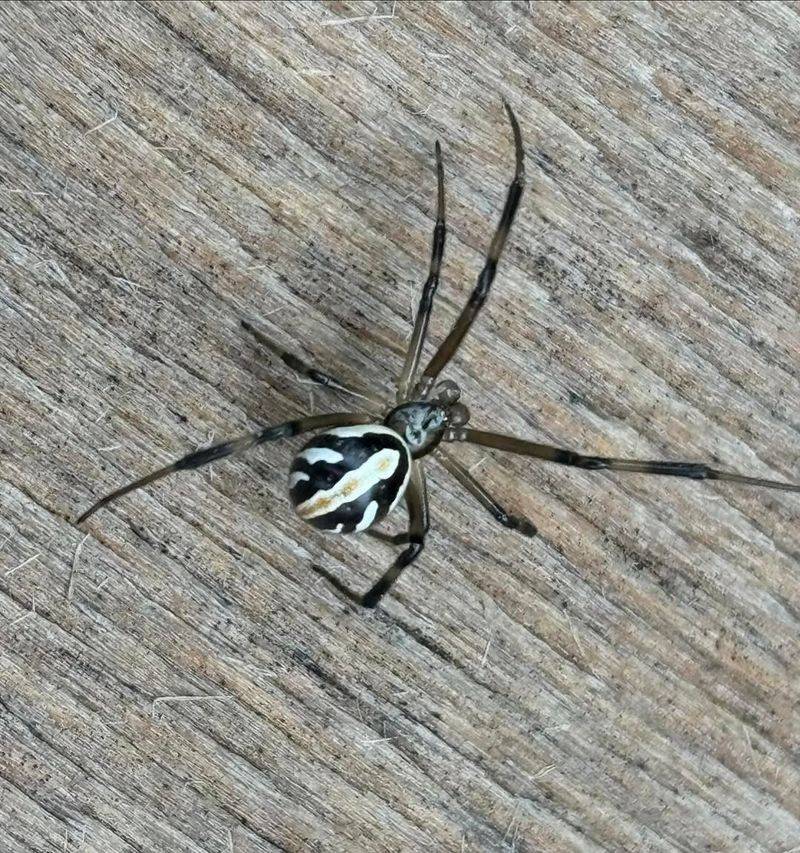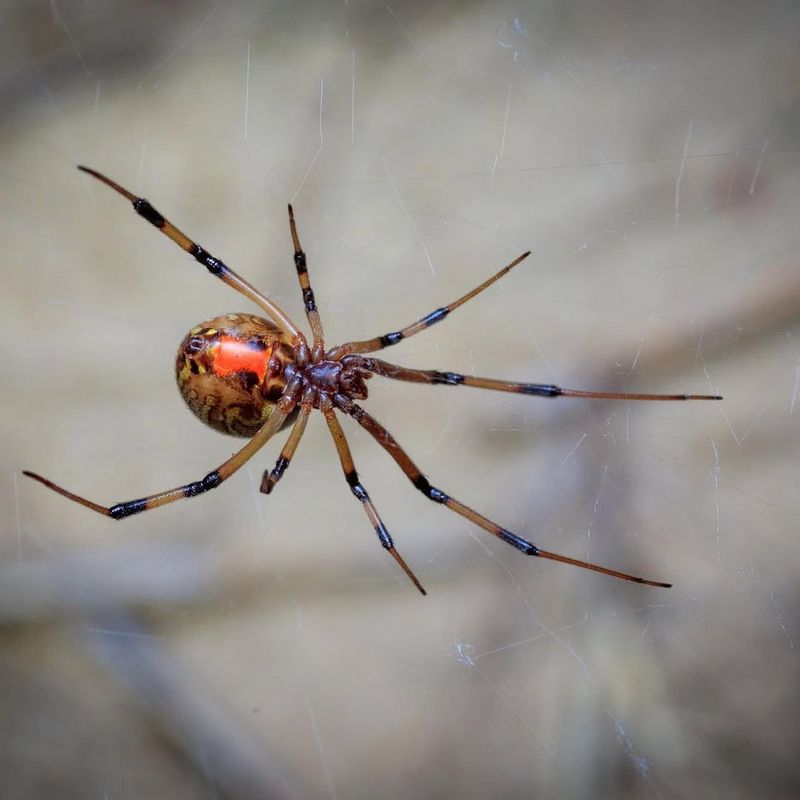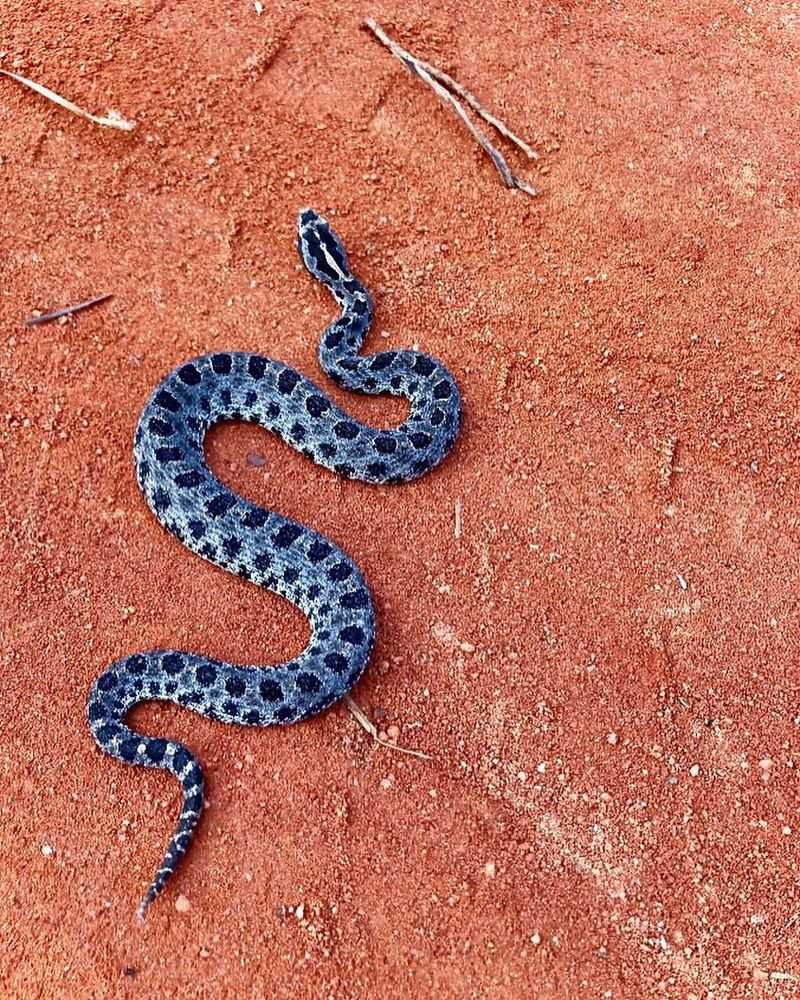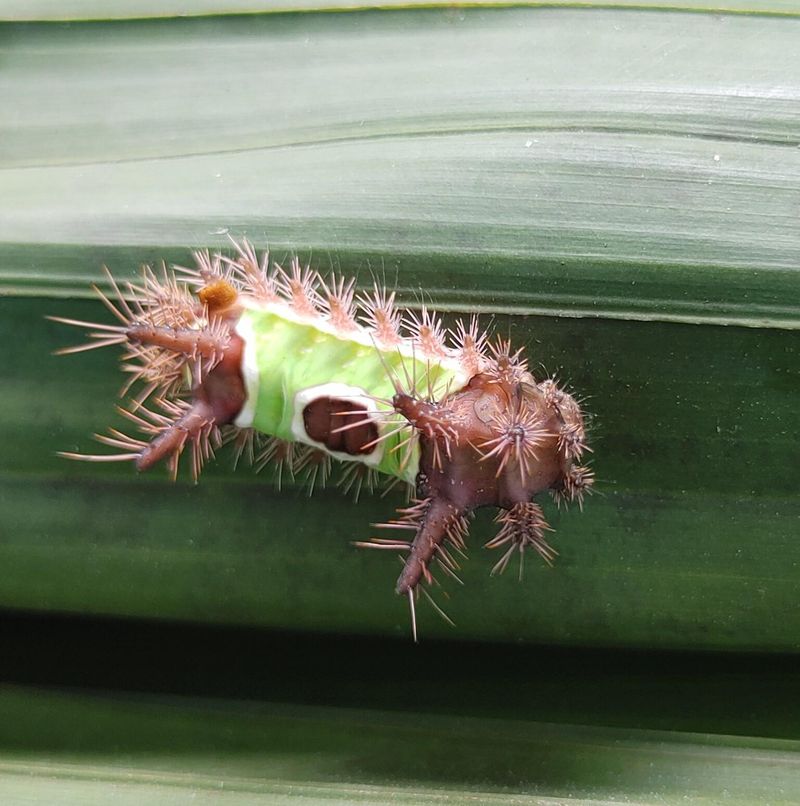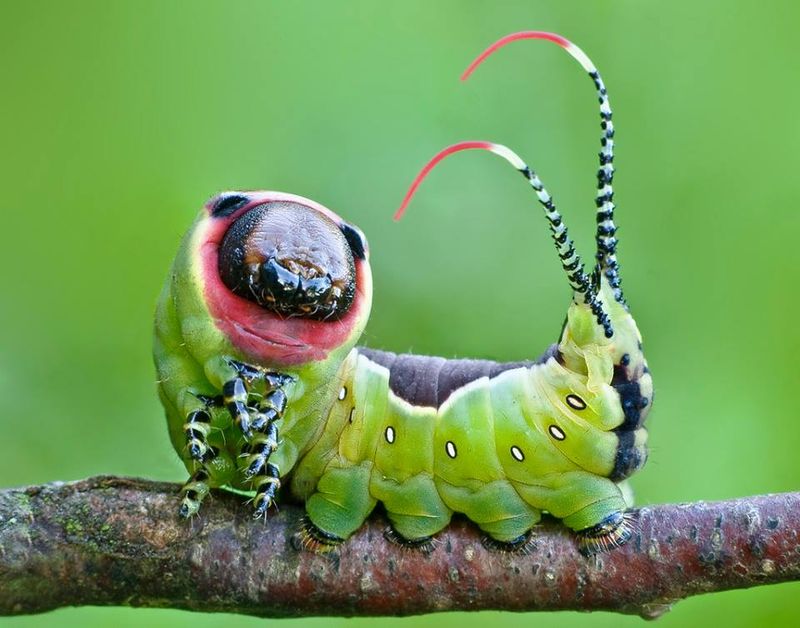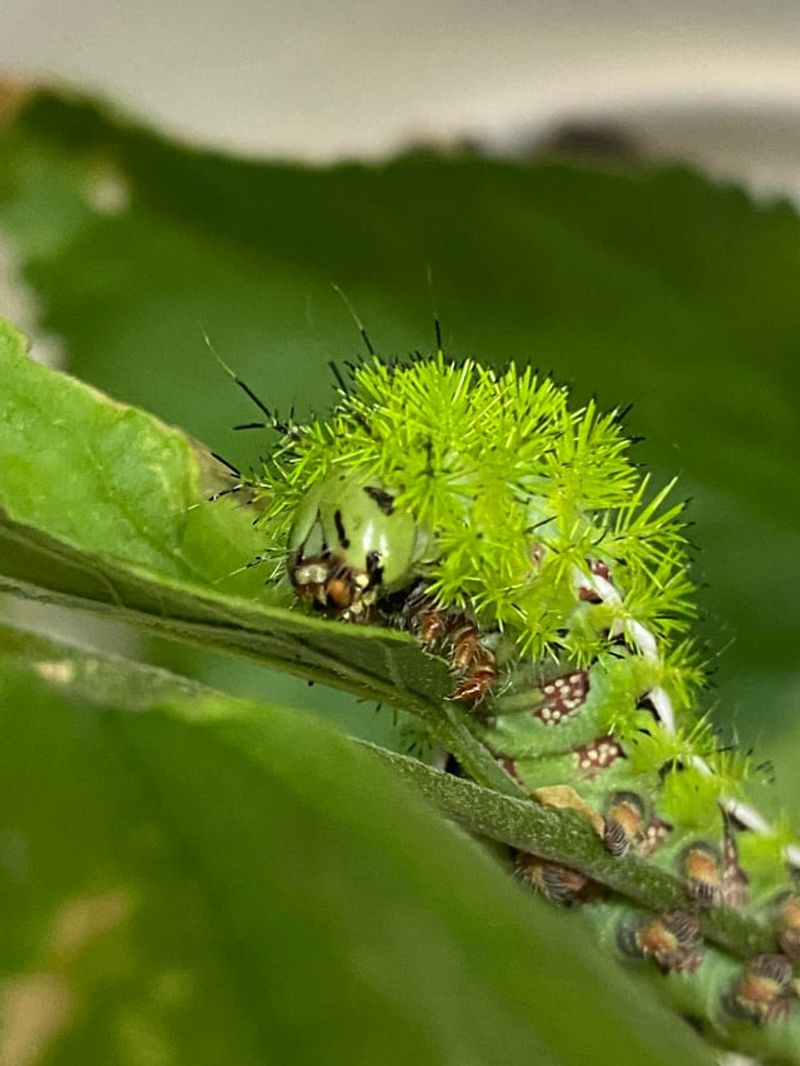Working in your Tennessee garden should be peaceful and rewarding, but sharing space with venomous creatures makes awareness essential. In my own Tennessee garden, I’ve learned the hard way that not all critters are as harmless as they seem, which makes knowing the local venomous species crucial.
From pulling weeds to trimming hedges, understanding what might be lurking nearby helps keep you safe while enjoying your outdoor space.
1. Copperhead Snake
Copper-colored heads and hourglass patterns make these pit vipers one of Tennessee’s most commonly encountered venomous snakes. They blend perfectly into leaf litter and mulch piles, making them nearly invisible when you’re weeding flower beds.
Gardeners often disturb them accidentally while moving rocks, clearing brush, or reaching into thick groundcover. Their bites are painful but rarely fatal, though medical attention is always necessary.
I once found one coiled under my compost bin while turning the pile. Now I always wear boots and use a rake to check hidden spots before reaching in with bare hands.
2. Timber Rattlesnake
These large rattlesnakes prefer rocky hillsides and wooded areas throughout Tennessee. Their gray or tan coloring with dark chevron bands provides excellent camouflage among fallen logs and stone walls.
You might encounter them near rock gardens, stone borders, or wooded edges of your property. The distinctive rattle serves as a warning, giving you time to back away slowly.
A neighbor once heard rattling while pruning roses near a stone retaining wall. She froze, backed up carefully, and called wildlife control. That experience taught our whole gardening community to listen carefully and move cautiously around rocky features.
3. Black Widow Spider
Shiny black bodies with red hourglass markings identify female black widows, common in Tennessee gardens. They build messy webs in protected spots like sheds, under deck boards, and inside garden gloves left outside.
Reaching into dark corners, grabbing tools, or putting on gloves without checking first can lead to bites. The neurotoxic venom causes severe muscle pain and cramping.
After finding one in my gardening gloves stored in the shed, I started shaking out everything before use and storing gloves in sealed containers indoors. Simple prevention beats a hospital visit every time.
4. Brown Recluse Spider
A violin-shaped marking on their backs distinguishes these spiders, though they’re often hidden in undisturbed areas. Tennessee gardens provide perfect habitat in stacked pots, stored cardboard, and piles of lumber.
Their bites can cause tissue damage and slow-healing wounds requiring medical care. Most bites happen when people put on clothing or shoes where spiders have taken shelter.
My cousin developed a nasty wound after being bitten while moving old planters stored in her garage. Now our family always inspects storage areas with a flashlight and wears gloves when handling items that haven’t been moved recently.
5. Southern Copperhead
Similar to their copperhead cousins, these snakes have slightly different banding patterns and prefer areas near water sources. Tennessee’s humid climate and frequent rainfall create ideal conditions throughout residential areas.
They hunt around garden ponds, rain barrels, and drainage areas where rodents and frogs gather. Morning watering routines can lead to unexpected encounters.
While checking my rain barrel one summer morning, I spotted one drinking from the overflow. That sighting changed my approach—now I make noise and use a long-handled tool to check around water features before getting close. Awareness prevents accidents.
6. Eastern Cottonmouth
Also called water moccasins, these semi-aquatic snakes inhabit wetlands, ponds, and streams across Tennessee. Their dark coloring and thick bodies help them blend into muddy banks and aquatic vegetation.
Gardens with water features, drainage ditches, or proximity to natural waterways attract them. They’re more aggressive than other venomous snakes when cornered, displaying their white mouth interior as warning.
A friend clearing vegetation around her backyard pond nearly stepped on one basking on the bank. She learned to survey the area from a distance first and use pruning shears on long poles for trimming near water edges.
7. Northern Black Widow
Similar to their southern relatives but with slightly different markings, northern black widows inhabit cooler parts of Tennessee. They favor protected outdoor structures like firewood stacks, outdoor furniture, and unused equipment.
Moving firewood for fire pits or rearranging patio furniture can disturb them. Their venom is potent, causing significant pain and requiring medical attention.
After a painful bite while moving logs for a garden border, my neighbor now wears leather work gloves and inspects wood carefully before handling. He also stores firewood away from main gardening areas, reducing accidental encounters during routine yard work.
8. Brown Widow Spider
Tan to brown coloring with orange hourglass markings distinguishes these spiders from their black cousins. Tennessee’s warming climate has made them increasingly common in gardens, especially around outdoor structures.
Their distinctive spiky egg sacs help identify their presence in sheds, under eaves, and around outdoor lighting fixtures. While less aggressive than black widows, their venom still causes pain and discomfort.
I discovered several brown widows colonizing my potting bench after winter. Regular inspection and cleaning of work areas now happens monthly, keeping populations down. Prevention through maintenance works better than dealing with established colonies later on.
9. Pygmy Rattlesnake
These small rattlesnakes rarely exceed two feet long, making them easy to overlook in dense vegetation. Their tiny rattles produce a buzzing sound often mistaken for insects, reducing their warning effectiveness.
Low-growing plants, thick mulch, and dense groundcovers provide perfect hiding spots. Weeding, planting bulbs, or working close to the ground increases encounter risks.
While planting hostas near my foundation, I heard faint buzzing and spotted a tiny gray snake I’d almost grabbed. That close call taught me to work slowly in dense plantings, checking carefully before reaching into thick foliage. Small size doesn’t mean harmless.
10. Saddleback Caterpillar
Bright green with a brown saddle-shaped marking, these caterpillars pack venomous spines that cause immediate burning pain on contact. They feed on various Tennessee garden plants including roses, corn, and citrus.
Brushing against them while pruning, harvesting, or weeding triggers instant stinging reactions. The pain can last for hours, sometimes causing nausea.
I accidentally touched one while deadheading roses and experienced intense burning that lasted all afternoon. Now I examine both sides of leaves before working and wear long sleeves during peak caterpillar season. Visual inspection before touching plants has become automatic habit.
11. Puss Caterpillar
Looking like tiny toupees, these fuzzy caterpillars seem harmless but hide venomous spines beneath their fur-like coating. They’re among the most venomous caterpillars in Tennessee, causing severe pain, swelling, and sometimes systemic reactions.
They feed on oak, elm, and other shade trees common in Tennessee landscapes. Falling from trees onto gardeners working below causes most stings.
My sister was stung when one dropped onto her shoulder while raking leaves under an oak. The pain was excruciating, requiring emergency care. Since then, we wear hats when working under trees and immediately remove any fuzzy caterpillars we spot.
12. Io Moth Caterpillar
Bright green with branching venomous spines covering their bodies, these caterpillars feed on many Tennessee garden plants. Their eye-catching appearance actually serves as warning coloration.
Touching them while handling plants causes immediate burning and welts that can last days. They commonly feed on corn, roses, willow, and various ornamental plants. While harvesting tomatoes, I brushed one with my forearm and developed painful welts within minutes.
That experience reinforced the importance of watching where I place my arms and hands when reaching through foliage. For me, knowing these twelve venomous creatures has transformed how I approach gardening in Tennessee, allowing me to enjoy my yard while staying safe.

